By Rick VanSickle
It’s All Saints Day and that can only mean one thing: The annual release of Thomas Bachelder’s deep dive into the terroir as seen through the eyes of Niagara Chardonnays and Pinot Noirs across the sub-appellations.
Fans of Bachelder wines should have received their emails today for the mad scramble to get their hands on any (or all!) of the seven single-vineyard Chardonnays and seven Pinot Noirs on offer from the 2019 vintage in the “Toussaints” release. You need to be on the mailing list for an opportunity to purchase, which you can sign up for here or take your chances that some of the wines will be available after subscribers have had their pick of the wines.
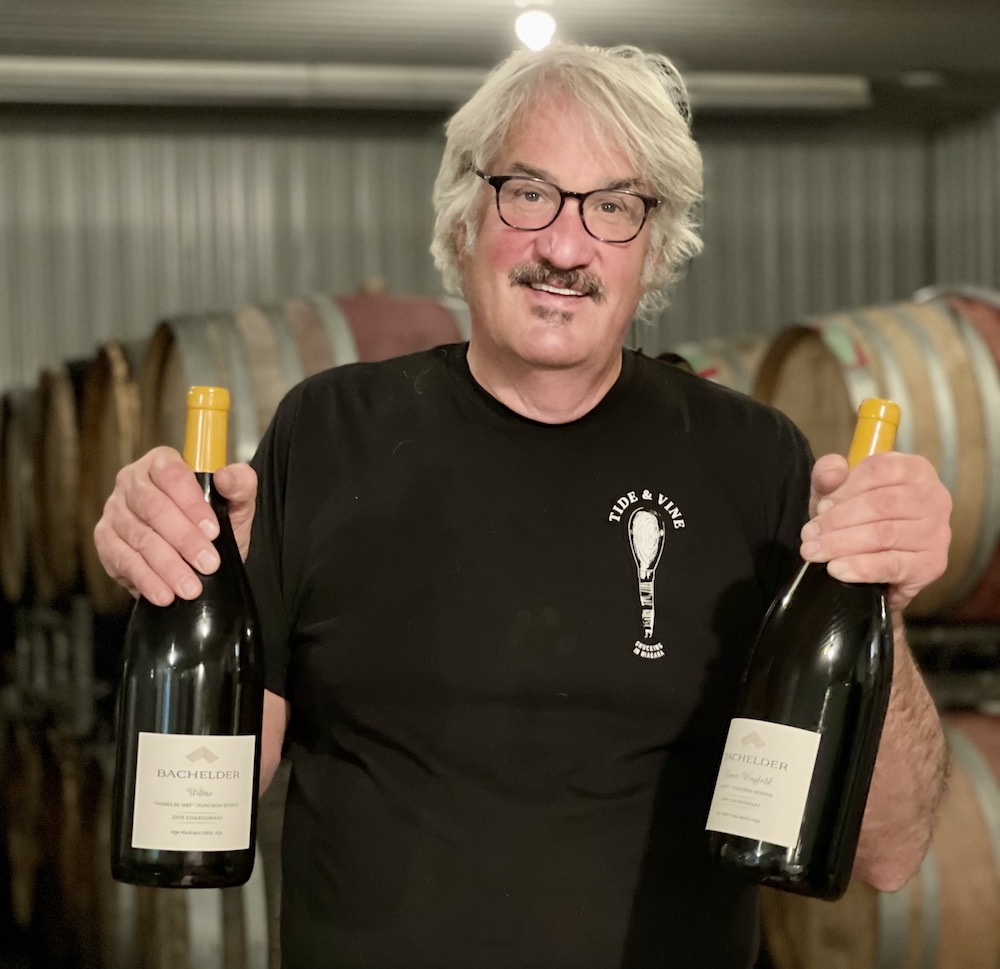
Wines In Niagara got a preview of the 14 wines on Friday after an extensive and informative tasting in Thomas Bachelder and Mary Delaney-Bachelder’s Bat Cave barrel cellar on Locust Lane on the Beamsville Bench with the winemaker. Wine writer extraordinaire Tony Aspler, below with Bachelder, and I navigated between the range of Pinots and Chardonnays trying to better dissect the various terroirs from Niagara-on-the-Lake to Grimsby that Bachelder now counts among his treasured and measured personal “grand crus” portfolio in Niagara that keeps expanding as he discovers more and more distinct terroirs that enhance the experience of soulful wines indicative of where the grapes are grown.
Bachelder has always been a champion of the Twenty Mile Bench (and an advocate for making the Jordan Bench a distinct sub-appellation) and has consistently produced a Pinot or two from the historic Lowrey Vineyard on the St. David’s Bench, but he has expanded his reach to include particular terroirs in Niagara-on-the-Lake and ventured to the far reaches of Niagara to Grimsby.
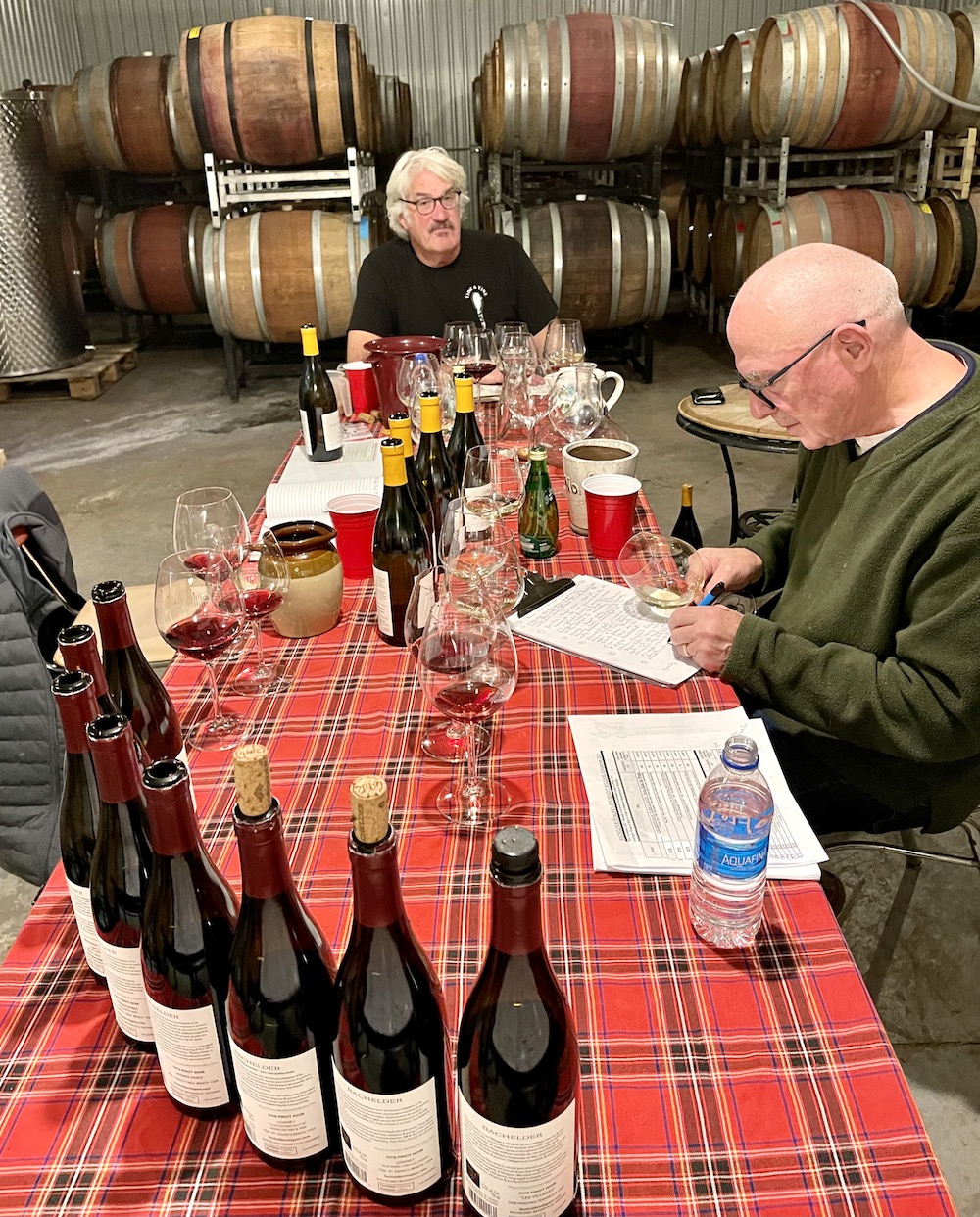
In this report, I offer a synopsis of the terroir of each wine and tasting notes, but not the winemaking style Bachelder employs. It’s fairly simple and similar across the varieties and terroirs. He uses 100% French oak, minimal new oak (up to 20%, and single barrel wines are always older), wild fermentations and minimal intervention. Bachelder’s super power is identifying the single barrels that make up the blends from each vineyard where he sources the grapes. He does this very well, and it shows in the quality of the wines he delivers vintage to vintage.
From Bachelder: “The intent is to make pure, suavely-textured wines that sing lightly and clearly of their vineyard origins with as little makeup as possible — wines that are finely-perfumed and tightly-wound, offering the classic refined fruit and textured minerality of the delicate silt, clay and dolomitic limestone-laced ancient lakebed terroirs of Niagara.”
The Nov. 1 Toussaints Release, the name that was given to someone who was born on All Saints Day, or chosen as an invocation of the protection of all the saints of the calendar, is now live and ready for ordering.
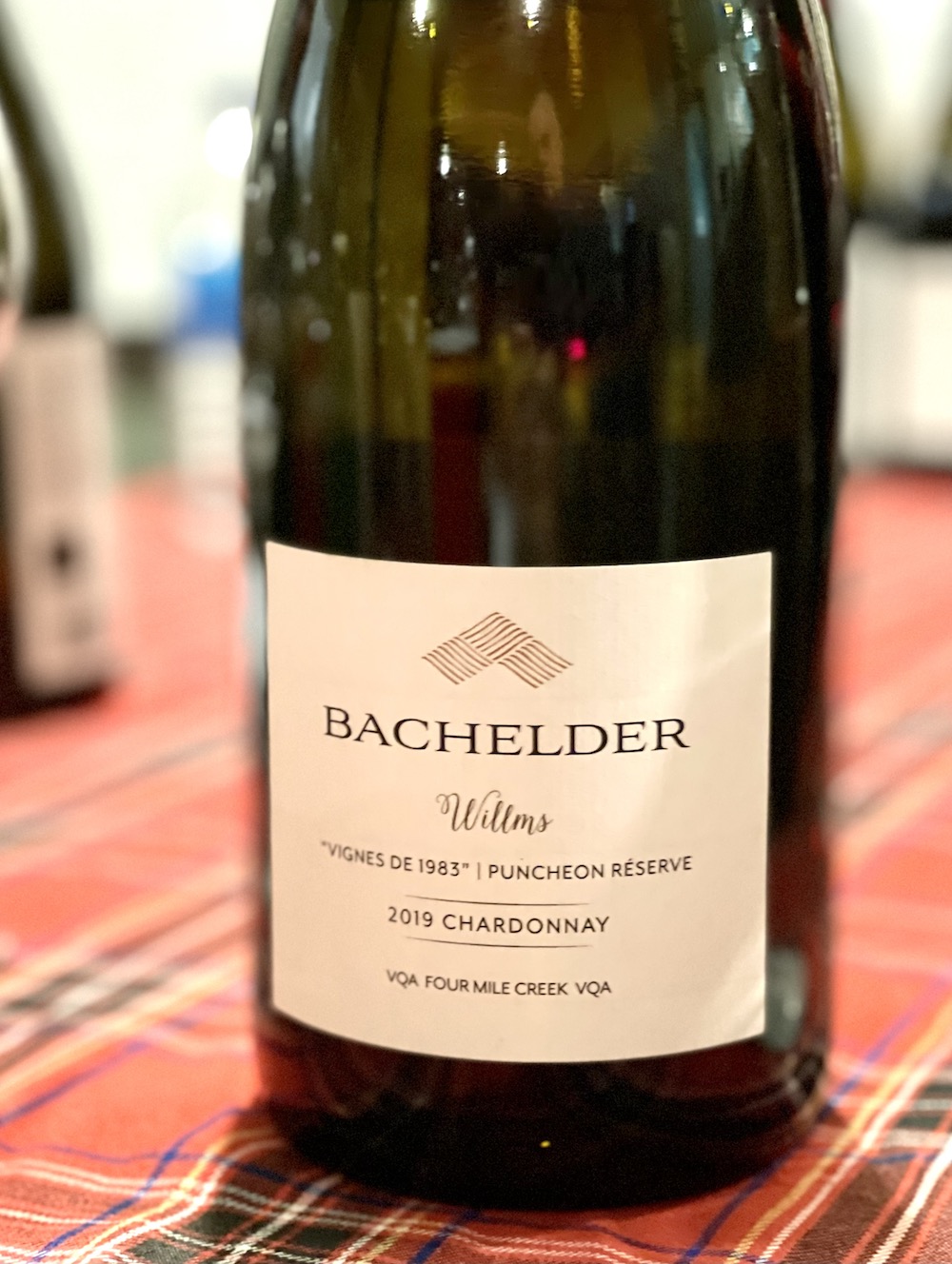
“Going to wine school in Beaune, France, with vintage barely over, we noticed that nobody celebrated Halloween (or, “Holy Evening”),” said Bachelder, “but rather observed the next day … All Saints – la Toussaint in French. Our release thus celebrates all our own vinous ‘Saints’ — our beloved single-vineyard Pinot Noirs and Chardonnays. These single-vineyards are the reason we chose the life we did.”
The classic show stopper wines — Wismer Wingfield West Chardonnay and Lowrey original vines Pinot Noir — rise to the top in my estimation in the 2019 release, but others may find a style that aligns more closely with their own palate. No question about it, Bachelder has the most complete and diverse terroir-driven portfolio of Pinot Noirs and Chardonnays in the country. That is just a fact.
It should be noted, that both the Willms and Wismer-Wingfield West wines will be available in magnums, photo above, at $108 in an offering called the Esmée Release on Dec. 5. “The magnums are from wines fermented in puncheons – which is to say that they are entirely different from the 750 ml bottlings, which are done in the traditional 228 L ‘pieces bourguignonnes,’ ” said Bachelder. Esmée is named after Thomas and Mary’s eldest daughter.
Here are my thoughts on the wines released today.
The Chardonnays
Bachelder Willms Vineyard 1983 Old Vine Chardonnay 2019 ($48, 93 points)

The Terroir: Willms is situated in the Four-Mile Creek sub-appellation, down near the Old Town of Niagara-on-the-Lake. The vineyard (once called Sandstone) was planted in 1983. The soil is a combo of silt, loamy clay, gravel, limestone and sand.
The Wine: An alluring nose of pear, gunflint, apple, lemon tart with a saline/chalky edge and elegant spices. It’s rich on the palate with a subtle creamy texture, pear/quince fruit, flinty minerality, integrated spice notes and plenty of acidity to keep it fresh and lively through the finish.
NOTE: This wine is also available in magnum online as of Dec. 5 for $108 per bottle. It will have a slightly different label with the words “Puncheon Reserve” on the bottle to signify that the wine was aged in larger format barrels. It maintains most if not all the attributes above, but both Aspler and I found the puncheon aged wines in magnum to be slightly tighter on the nose and palate and will need a bit more bottle age for optimum pleasure down the road.
Bachelder Bai Xu 1981 Old Vine Chardonnay 2019 ($45, 92 points)

The Terroir: The Bai Xu Vineyard is only one line north of Willms in Niagara-on-the-Lake in the Four-Mile Creek sub-app. It is one of the oldest vinifera plantings in the region, 40 years of age as of the 2021 harvest. The grape grower number is 011. The soil is a mixture of sandy and loamy sediments over lacustrine clay with some silt and limestone.
The Wine: Quite a different expression of Chardonnay than the Willms. It has a more opulent nose of golden apple, a touch of tropical fruits, peach, sun-ripened pear and oak spice notes. It’s rich and concentrated on the palate with pear, nectarine, pineapple, golden apple and a spicy edge on a juicy, lively finish.
Bachelder Cuesta ‘Far East, Man!’ Chardonnay 2019 ($45, 93 points)

The Terroir: Cuesta is located on the south side of Old Highway 8 between Vineland and Jordan on the Twenty Mile Bench. The planting is dolomite-limestone influenced clay soils with a solid silt component. The “Far East” note on the label refers to where Bachelder sources his Chardonnay, what he calls the “filet mignon” part of the vineyard located at the furthest eastern edge, snug against the escarpment. In other words, “we just dig the far-eastern end of the vineyard, man.”
The Wine: Moving across the canal into the Twenty Mile Bench, we see wines that are defined more by their minerality and finesse rather than ripeness. Cuesta has an enticing nose of flinty minerality, pear skin, saline, apple, lemon zest and bergamot with persistence and elegant spice notes. The lovely vein of tightly wound flinty/saline minerality notes carries to the palate with rich pear, quince, lemon, subtle creamy accents and integrated spices with a finessed finish.
Bachelder Wismer-Foxcroft North Chardonnay 2019 ($48, 94 points)

The Terroir: The Wismer family has been farming grapes across 300 acres on the Vineland and Jordan Benches for over 25 years. Bachelder is a huge fan of Wismer fruit and isolated two distinct blocks he uses for two distinct wines, which usually vie for the top two spots in the lineup every vintage. Foxcroft North, with its steep slope, stony-clay and limestone soil, is chosen for the distinct minerally attributes it imparts.
The Wine: Such a gorgeous nose of saline and crushed oyster shells with pure pear/apple notes, flint, elegant spice and perfume with citrus zest. It has depth and concentration on the palate with rich pear/quince fruits, dry extract, subtle savoury notes, wet stones, flint and a long, finessed and zesty citrus finish. Very fine Chardonnay with cellaring potential of 5+ years.
Bachelder Wismer-Wingfield West Chardonnay 2019 ($48, 96 points)
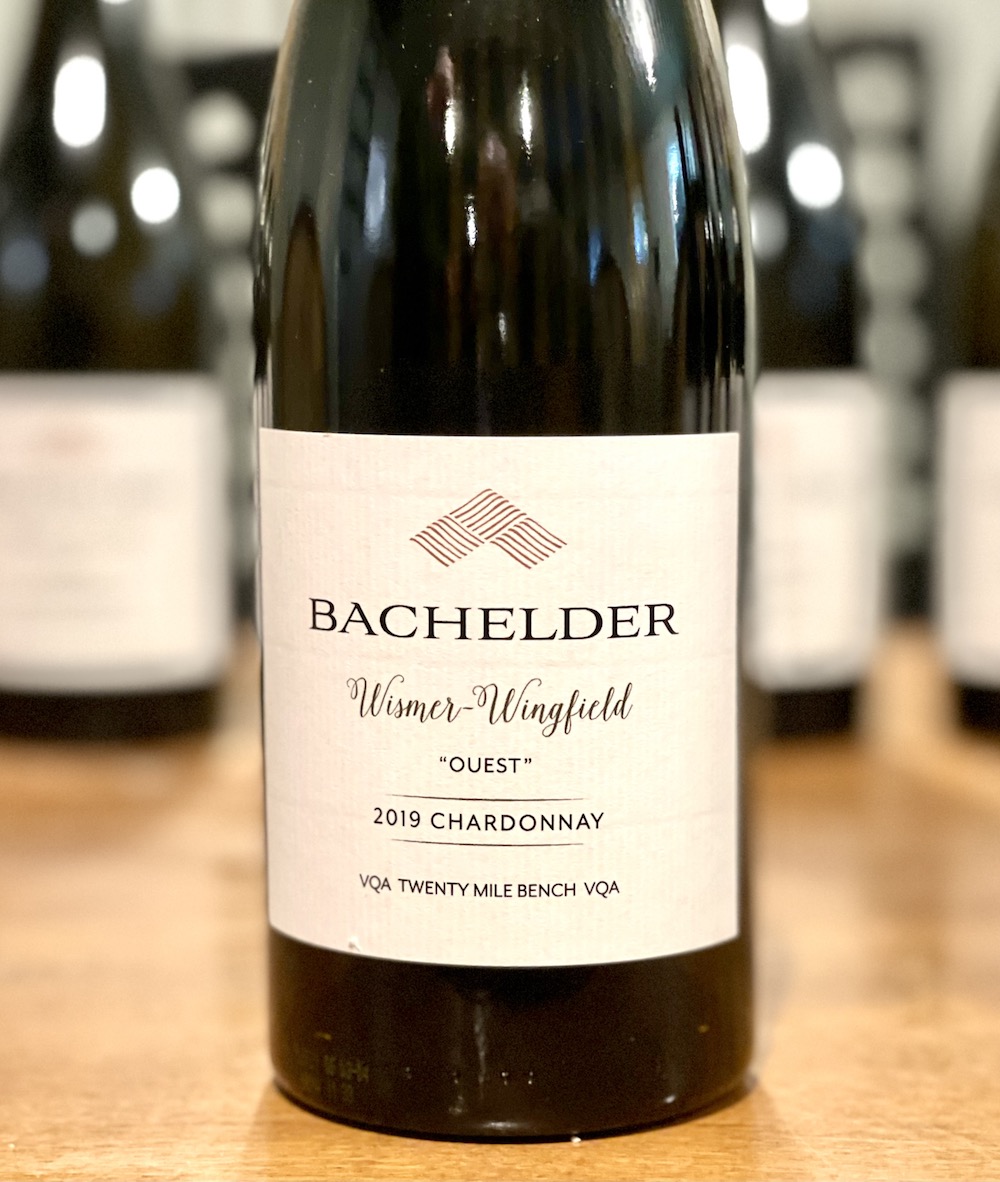
The Terroir: This Chardonnay from “The hill of Wingfield” is what Bachelder not so quietly refers to as “grand cru” even though it is a classification that still has no standing in Niagara. The Chard grown in this parcel, which is at the highest elevation and furthest from Lake Ontario, are the latest ripening in Wingfield. As Bachelder says, and in this I agree 100%: “This wine’s beauty is certainly at least partially in the eye of the beholder, but, come on, the Wingfield is grandiose!”

The Wine: The vineyard is located 6.8 km from Lake Ontario at an altitude of 160 metres. The Wingfield parcel has always shown profound, singular terroir on a perfectly exposed, well-drained slope on the east side of Victoria Street in Vineland. Wingfield is picked 10 days to two weeks after other Chardonnay vineyards. The vines are now nearly 30 years old, planted in 1993 on lighter silty/clay and dolomitic limestone soil, and shows the classic Vineland (as distinct from Jordan) combination, of what Bachelder calls “plush richness and tight minerality.” The Wismer-Wingfield block has always been sourced from the western part of the parcel, which makes for a long hang-time and “an intense, rich, noble flavour, overlaid by a tight, long minerality.” It has been named (more than once) as Wines In Niagara’s Most Thrilling Wine of the Year and consistently scores 93+ points (the 2018 was awarded 94 points). The 2019 version is a wonder, perhaps the best ever produced and worthy of the score above, even if it needs time to fully reveal itself. Such a gorgeously perfumed and floral nose with ripe pear, bergamot, granny smith apple, vanilla toast, light creamy accents, elegant oak spices and defined by a stony/slate minerality that appears as if it’s just beginning to manifest itself. But, OMG, one taste and it vaults to another level. It’s rich, dense and concentrated on the palate while still maintaining a saline, stony, flinty minerality profile. Next comes defined fruits of ripe pear, lemon curd, apple skin and an ever-so-subtle note of reduction that makes this highly complex and attractive with rich and toasty spices and an eternally long and finessed finish. Tight, yes, but wait for this to fully reveal itself. Cellar 7+ years, but try at least one of them now so you can watch the evolution.
NOTE: Also available in magnum on Dec. 5 for $108 per bottle. It will have a slightly different label with the words “Puncheon Reserve” on the bottle to signify that the wine was aged in larger format barrels. It maintains all the attributes above, but both Aspler and I found the puncheon aged wines in magnum to be slightly tighter on the nose and palate and will need a bit more bottle age for optimum pleasure down the road.
Bachelder ‘Warren Saunders 100’ Vineyard Chardonnay 2019 ($48, 93 points)

The Terroir: The Saunders Vineyard is located about 4 km from the lake, but on the Beamsville Bench on Mountainview Road. The vineyard is certified organic and the soil is clay, silk, sand and limestone. Bachelder takes his fruit from a higher, southern part of the vineyard with older vines.
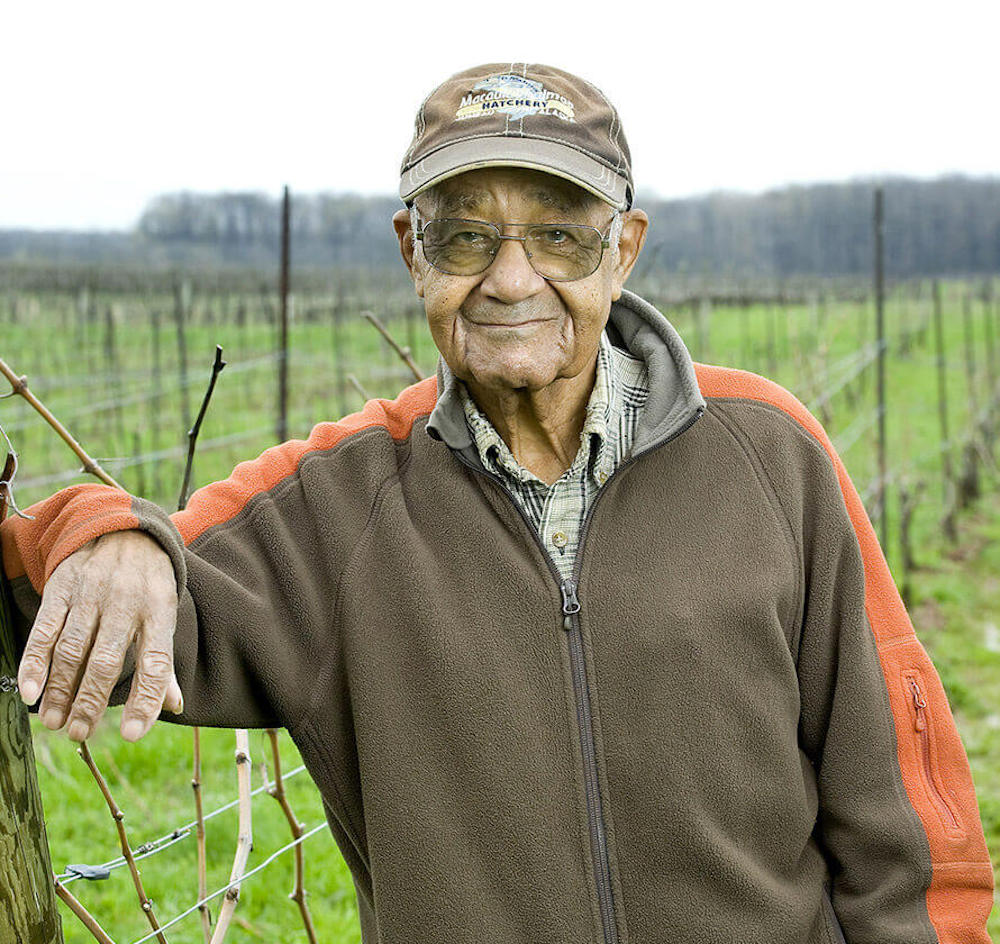
Warren Saunders: Bachelder honours Warren Saunders, above, this vintage with the inscription “Warren Saunders 100” on the label. His 100th birthday was on March 27. The Saunders family property has been farmed since the mid-1800s. Warren and Ivy Saunders purchased the property in 1965 and continued to farm the existing mixed tender fruit orchard and labrusca/hybrid vineyard. They were avid farmer’s market goers, selling the fruit and farm-made grape juice at several markets in southern and eastern Ontario. But the bulk of the grapes were sold to large-scale wineries for the table wines of the day. Eventually, with changes in the Niagara grape and wine industry, the old vines and fruit trees were replaced with vinifera varieties Chardonnay, Pinot Noir, Cabernet Franc, Merlot and Riesling. Operated now by siblings Leslie John and Ann-Marie, the Saunders Family Farm & Vineyard wine grapes have been grown organically since 2008, certified organic since 2013.
The Wine: The nose is broad and concentrated with poached pear, wet stones, golden apples, rich oak spices and subtle lemon zest. It shows concentrated stone fruits on the palate, fine oak spice, lemon tart and zippy citrus zest on the lifted finish.
Bachelder Grimsby Hillside North Slope, Starry Skies’ Chardonnay 2019 ($45, 94 points)
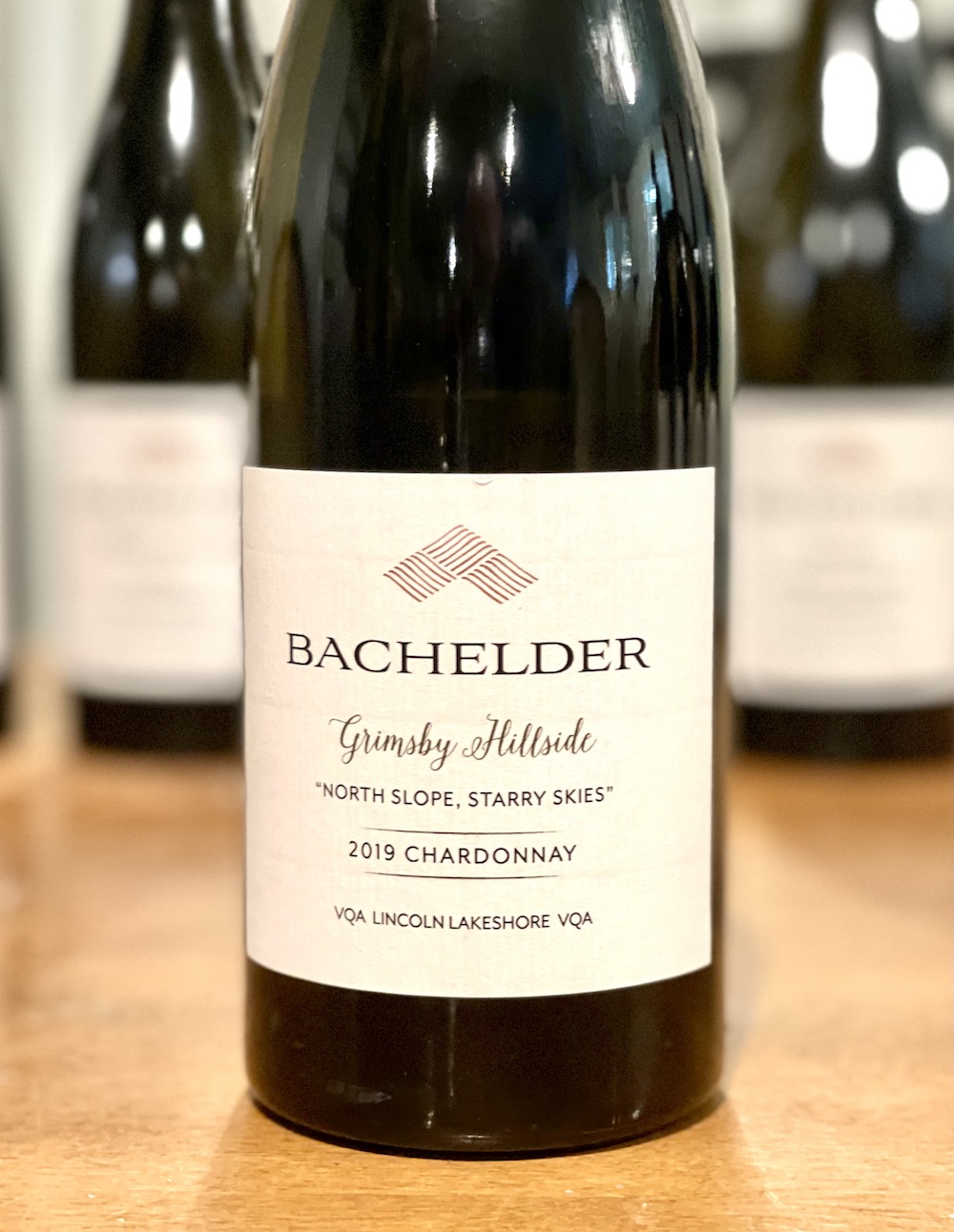
The Terroir: Grimsby Hillside is a wild, stony windscape site out in the extreme west of Niagara. It’s nestled into the foothill of the escarpment. For the next vintage, Bachelder is going to call this bottling the Frontier Block “for the fact that it is the first — or last — vineyard/terroir in Niagara.” The soil here has very little sand, with silt, clay and limestone. It is quickly getting the attention from top winemakers in Niagara.
The Wine: It has a lovely perfumed nose of pear, toasted almonds, gorgeous salinity and gunflint, quince and spice notes. It’s richly concentrated and textured on the palate with apple/pear, toasted nuts, elegant spices, length and finesse through a long finish. A beautiful wine that can age 5+ years.
The Pinot Noirs
Bachelder Lowrey Vineyard Old Vines Pinot Noir 2019 ($48, 93 points)

The Terroir: The historic Lowrey Vineyard is at the tail-end of the St. David’s Bench, located just 5 km from the Niagara River with complex soil variability and limestone content due to both its glacier heritage and the fact that the river actually used to run through the property many eons ago. This Old Vines Pinot is planted on a very specific two-acre site on the 60-acre property on a gentle slope. This bottling is from the 1988 and 1993 planting.
The Wine: The two Lowreys represent the prettier, more floral side of the Pinot Noir lineup, the classic “iron fist in a velvet glove.” This Old Vines offering is a ballerina, with a pretty, floral nose of wild raspberries, cherries, elegant oak spices, chalky minerality and this lovely note of perfumed strawberries. It’s silky and smooth on the palate with forest berries, pure raspberry/strawberry notes, subtle earth, integrated oak spice with length and verve on the finish.
Bachelder Lowrey Vineyard ‘Old Eastern Block’ Pinot Noir 2019 ($65, 94 points)

The Terroir: As above, but the Eastern Block consists of a blend from the original five rows of Lowrey planted in 1984 and the 1988 plantings, both planted by the Lowrey family for Karl Kaiser, winemaker at the time at Inniskillin, and used under the Alliance label — the first indication in Niagara that showed the region could make first class Pinot Noirs.
The Wine: Bachelder is one of five winemakers, including Five Rows Craft Wine, where the grapes come from, who craft this historic fruit into wine. If you are a wine lover, put tasting all five of them as a horizontal on your bucket list — it’s definitely an exploration of terroir vs. winemaking and simply fascinating to see how style impacts the finished product. Bachelder’s MO is to treat this with less oak to show the prettier side while maintaining freshness and finesse. The nose shows a fetching and persistent range of raspberries, cherries, red currants and cranberries with lovely perfumed rose petals, some brambly notes and perfectly integrated spices. There is an ethereal goût de terroir that shows up every vintage from the Lowrey Vineyard and it is particularly evident in the older vines. The palate shows a rich and broad range of red berries in a complex style combining fruit, spice, fine-grained tannins and infinite length through a finessed finish. Such a beautiful wine that will cellar 7+ years.
Bachelder Cuesta Vineyard Pinot Noir 2019 ($45, 92 points)

The Terroir: Cuesta is located on the south side of Old Highway 8 between Vineland and Jordan on the Twenty Mile Bench. The planting is dolomite-limestone influenced clay soils with a solid silt component.
The Wine: This is a complex Pinot that is anything but shy with an earthy, brambly, subtly reductive barn-yardy nose and an array of wild red berries, bold spice notes and persistence. It shows expressive red and dark berries on the palate, earth, assertive tannins and spice with plenty of length and pizzazz on the finish. Cellar for 6+ years and watch this all come together.
Bachelder Wismer-Parke Pinot Noir 2019 ($48, 92 points)

The Terroir: Wismer-Parke is 5.5 km from the lake at an altitude of 133 metres, from the sweet spot of the Twenty Mile Bench on reddish magnesium and dolomitic-limestone clay soils with a solid silt component. The vines were planted in 1999.
The Wine: A more masculine, if we can use that term, style of Pinot with a nose of wild raspberries, dark cherries, woodsy/earthy notes, anise, cranberries, Christmas spices and gamy notes. There’s a floral note on the palate but also an earthy/savoury feel with red berries, cassis, lifted spice notes, firm tannins, structure and a juicy lift on the finish. Cellar 7+ years.
Bachelder Wismer-Parke ‘Wild West-End’ Pinot Noir 2019 ($60, 93 points)

The Terroir: The same as above, but this is from a specific block planted to a “mystery clone” that intrigued Bachelder as much as the song Wild West End by Dire Straits, hence the name of the wine.
“You’re just another angel in the crowd
And I’m walking in he wild west end
Walking with your wild best friend
And my conductress on the number nineteen
She was a honey”
Click here for the Wild West End (you’ll be glad you did)
The Wine: I have a feeling “burghounds” will absolutely love this Pinot Noir. Such a complex nose of earthy/savoury goodness with a mélange of red berries, undergrowth, bloody/iron minerality, touch of reduction, flint, barnyard and savoury spices. It builds in intensity on the palate with red and dark berries, a fusion of brambly raspberries and cassis, smooth tannins, tingly acidity and a range of bold spice notes even without any new oak used here. The finish is long and lively. Interesting now but extended cellaring will pay big dividends.
Bachelder Hanck Vineyard Pinot Noir 2019 ($48, 94 points)

The Terroir: The Hanck Vineyard, owned by Rob Harold and Joe Schenk and farmed by the Wismer family, is located just 10 metres from the Wismer-Parke Vineyard. Reddish magnesium-oxide and dolomite-limestone is influenced by the clay soils with a solid silt component.
The Wine: An interesting, complex nose that starts with a touch of reduction and underbrush then tart red berries, a lifted rose petal note, cranberries, savoury spices and minerals. It’s lovely on the palate and quite dense with brambly raspberries, cherry extract, earthy/savoury notes, silky tannins, integrated spice notes and a long, finessed finish. Cellar 8+ years.
Bachelder Saunders Vineyard Warren Saunders 100 Vineyard Pinot Noir 2019 ($48, 92 points)

The Terroir: See note on the Saunders Chardonnay for details on the naming of this wine. The Saunders Vineyard is in the Beamsville Bench sub-appellation, 3.9 km from the lake and is organically certified on clay, silt and limestone soil.
The Wine: This young-vine Pinot shows an up-front nose of dark cherries, strawberries, wild raspberries and floral notes with a pure and ripe profile and well-integrated spice notes. The palate reveals ripe red berries, crunchy cranberries, cassis, a touch of earth and spice, firm tannins and a vibrant, finessed finish. Drinking pretty well right now, but can cellar a few years to watch its development.







Comment here